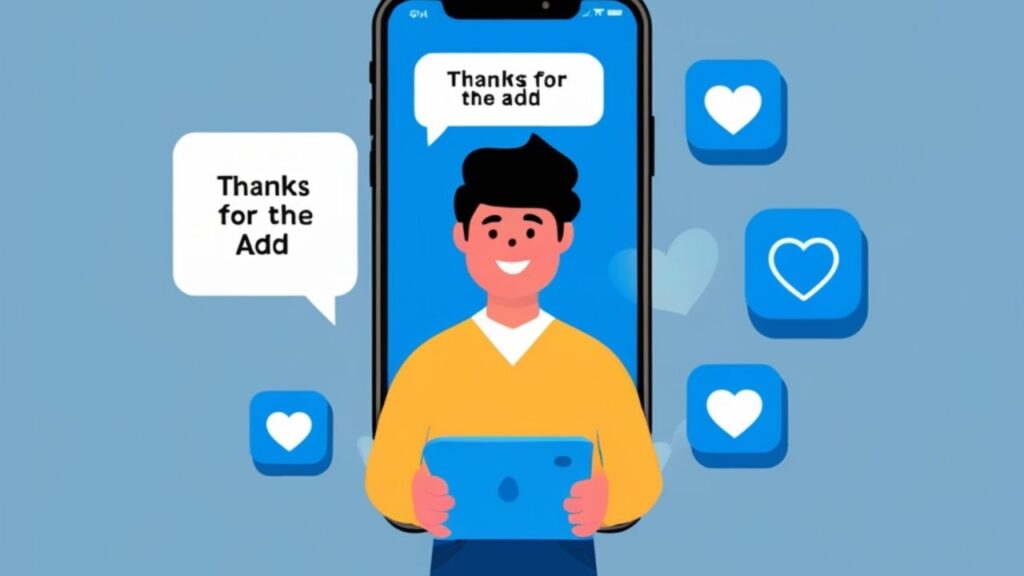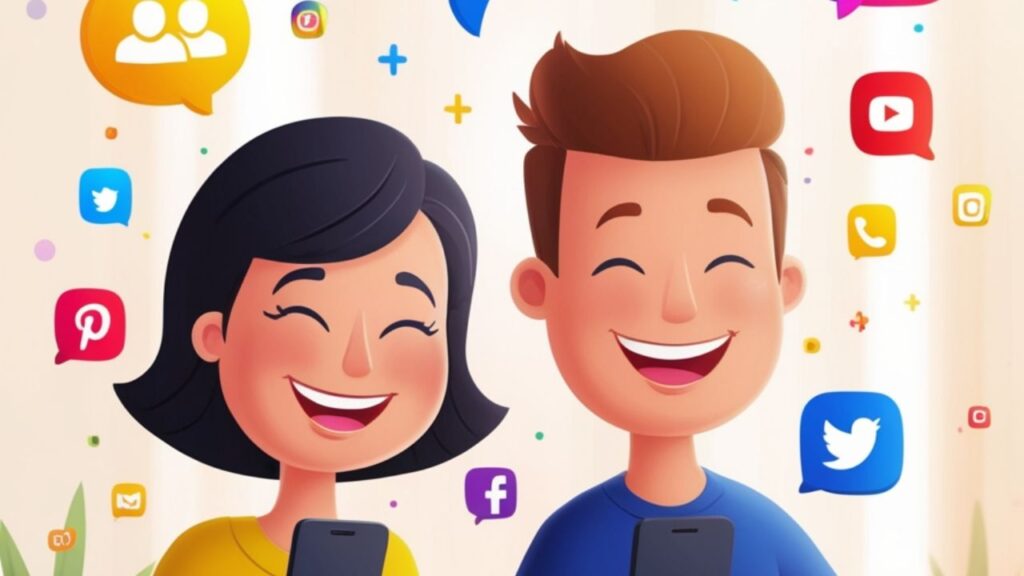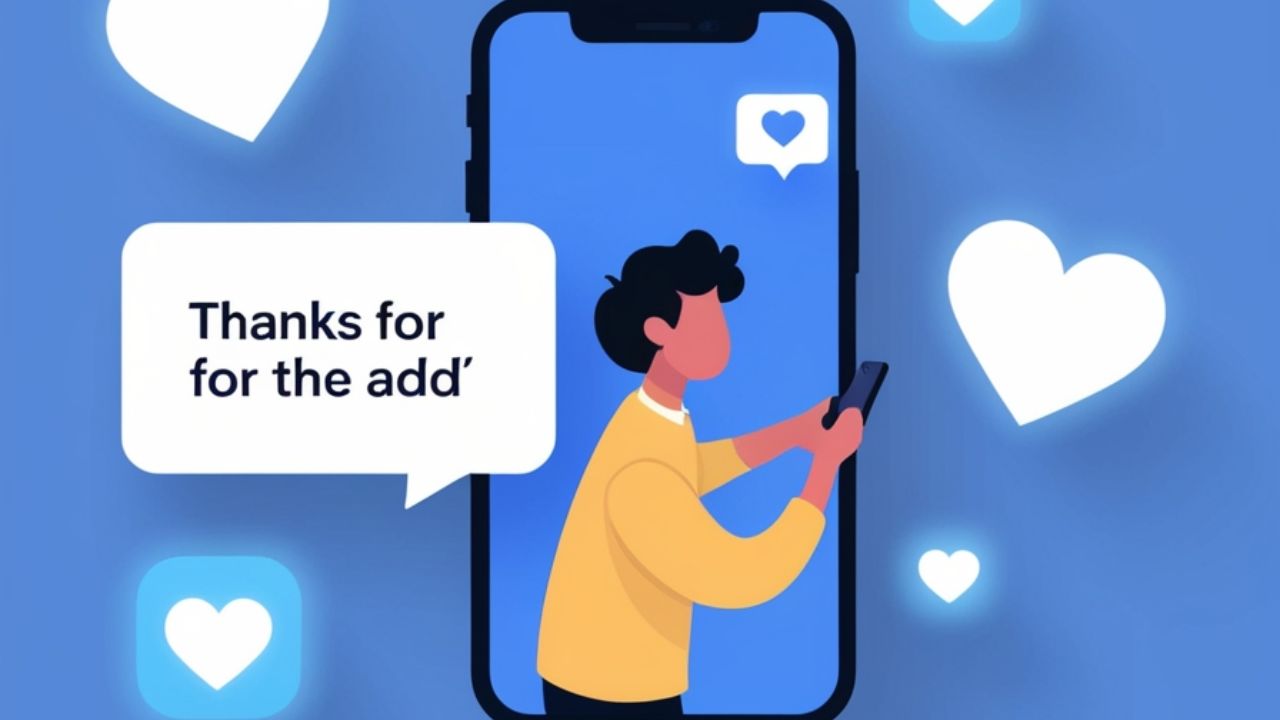People often say Thanks for the Add when someone accepts a friend request or follows them online. It is a simple way to show good manners on social media. This short message helps create friendly connections between people who meet on the internet.
Over time, language on social media has changed a lot. Words that started as fun or casual are now part of daily online talk. Digital communication allows new ways of saying thank you that sound natural and easy to understand.
Even though the phrase feels a little old, it still sounds kind. What matters most is the feeling behind the words. When people speak with respect and warmth, phrases like online greeting keep friendships bright and conversations polite.
Understanding the Phrase “Thanks for the Add” in Online Interactions
The phrase Thanks for the Add shows kindness when someone connects with you on social media. It became popular when people started using online platforms to make new friends. This short message helps start friendly talks and keeps online spaces warm and welcoming.
In today’s world, people use many ways to greet others online. Social media helps everyone share messages quickly and easily. Saying thank you after a new connection shows respect and care, helping build trust in digital communication among friends and communities.
- The phrase Thanks for the Add shows appreciation when someone accepts a friend request or connection on social media. It is a short and polite way to greet a new online friend.
- People started using this phrase during the early days of digital communication when adding someone felt more personal and special. It helped create friendly bonds between users.
- Today, it still works as a warm online greeting, though many prefer newer and more natural ways to thank others for connecting on modern platforms.
Is “Add” Grammatically Correct as a Noun in This Phrase?
In English, the word add usually works as a verb, meaning to join or include something. When people say “Thanks for the add,” they use it as a noun instead. This shows how language changes to fit new ways of online communication.
Many people use verbs as nouns in casual talk. Words like invite, follow, and like also changed the same way. These small shifts make speech simpler and more natural. Modern digital language often accepts such changes without breaking any clear meaning.
Examples of Verbs Turned Into Nouns in Everyday Speech:
| Verb | Informal Noun Form | Accepted Usage? |
| Invite | “Thanks for the invite” | Widely accepted |
| Add | “Thanks for the add” | Semi-accepted |
| Follow | “Thanks for the follow” | Accepted in social media |
| Like | “I got a like” | Fully integrated |
| DM | “Send me a DM” | Standard in digital slang |
In daily talk, people often change verbs into nouns without thinking about it. Words like invite, follow, and like show how language grows. These simple forms make speaking and writing faster in digital communication and friendly online chats.
This change happens because people enjoy using shorter words. For example, saying “Thanks for the invite” feels quick and natural. Modern social media often turns verbs into easy nouns, helping everyone understand messages clearly in today’s fast online world.
The Flexibility of Social Media Language

People use social media in many creative ways to share ideas and feelings. The words and styles change quickly as new trends appear. This shows how flexible online talk can be, helping users express emotions clearly through digital communication.
Modern online language grows fast because people mix words, emojis, and short forms. Everyone enjoys writing that feels easy and fun to read. This freedom makes online chatting friendly and helps build strong connections in every part of the world.
- Social media allows people to play with words and create new expressions. Users often shorten phrases, use emojis, or mix languages to make messages fun and quick to read.
- Modern digital communication changes fast because people share ideas from many cultures. This makes online language more creative and colorful.
- The flexible nature of online language helps everyone express feelings easily, build friendships, and stay connected in a way that feels natural and friendly.
Context Is Key: When “Thanks for the Add” Works and When It Doesn’t
You wouldn’t walk into a corporate meeting and say, “Yo, thanks for the add.” But you might say it in a casual Facebook message or on Discord.
See also “Introduction To vs Introduction Of: Key Differences”
When It’s Okay to Use:
- The phrase Thanks for the Add fits well in friendly social media spaces like Facebook or gaming groups where people connect casually.
- It sounds natural in digital communication when joining online forums, chat groups, or community pages with shared interests.
- This online greeting works best between friends, classmates, or hobby groups where the tone stays relaxed and welcoming.
When It Feels Outdated or Awkward:
- The phrase Thanks for the Add feels old-fashioned on professional social media platforms like LinkedIn, where people prefer formal or modern greetings.
- In serious digital communication, it may sound awkward when used with strangers or in business conversations.
- Younger users in online communities often find it outdated and prefer more natural phrases like “Glad we connected” or “Nice to meet you here.”
Better Alternatives to “Thanks for the Add”
Sometimes “Thanks for the add” feels robotic or impersonal. If you want to stand out or be more genuine, try something fresh.
Alternative Phrases (Grouped by Platform & Use Case):
| Phrase | Platform | Tone | Notes |
| Great to connect! | LinkedIn, email | Professional | Friendly and safe |
| Appreciate the connect | LinkedIn, Twitter | Semi-casual | Works well in tech/startup circles |
| Thanks for connecting with me | Facebook, LinkedIn | Neutral | Better than “add” in formal cases |
| Thanks for the follow! | Instagram, Twitter | Casual | Still widely used |
| Excited to be here! | Discord, Facebook groups | Friendly | Great for community engagement |
Digital Gratitude Around the World: Cultural Norms
Digital etiquette is shaped by culture. In some regions, thanking someone for a connection is expected. In others, it may come across as excessive or even odd.
Examples:
- In countries like the Philippines and India, people often use Thanks for the Add on social media to show politeness and friendliness after connecting online.
- In the United States and Europe, many users avoid this phrase in digital communication because it sounds old or impersonal.
- In Japan and South Korea, people use quiet online greetings or polite emojis instead of words to express appreciation for new connections.
The Psychology of Online Gratitude: Does It Matter?
You might ask: Does saying “Thanks for the add” actually help?
According to behavioral psychologists:
- Behavioral psychologists say small acts of gratitude in digital communication help people feel noticed and valued, even in short online chats.
- Simple thank-you messages on social media can build positive emotions and make conversations friendlier.
- Personal and sincere online greetings are more effective in creating real connections than copied or automated replies.
Why Some Users Dislike the Phrase “Thanks for the Add”
Not everyone appreciates the sentiment.
Common Complaints:
- Many users feel Thanks for the Add sounds copied or robotic in digital communication, making it seem less personal.
- Some people on social media think it belongs to older internet days and no longer fits modern online talk.
- Others find this online greeting unnecessary when no real conversation or shared interest follows after connecting.
Real Comments from Reddit & Twitter:
People on Reddit and Twitter often share thoughts about online manners. Some say old phrases sound funny or outdated. Others enjoy them because they bring back memories from early social media days when simple messages made people feel happy and connected.
Many online users now prefer short and natural greetings. They post friendly comments to show respect and kindness. These small words build stronger ties in digital communication, reminding everyone that good manners still matter, even on busy online platforms.
From Formality to Casual: The Evolution of Online Etiquette

- In the early days of social media, people used polite phrases like Thanks for the Add to show respect and form new connections.
- As digital communication grew faster, users began favoring short, casual words, emojis, and friendly expressions.
- Today, online etiquette focuses more on sincerity and tone rather than strict grammar, helping people connect naturally across different platforms.
How to Respond to “Thanks for the Add” (Without Sounding Weird)
If someone messages you this, you don’t have to overthink it. A quick, kind reply works – or no reply at all, if it doesn’t require one.
See also Where Are You Headed or Heading? Grammar Made Simple
Sample Replies:
- A polite reply in digital communication could be “Happy to connect with you,” which sounds warm and respectful.
- On social media, a friendly response like “Nice to meet you here” keeps the conversation light and welcoming.
- Another simple online greeting is “Glad we’re connected,” showing appreciation while encouraging further interaction.
When Not to Respond:
- Avoid replying in digital communication when the message looks copied or sent to many people without a personal touch.
- On social media, skip responses to strangers who have no shared interests or context.
- Don’t engage with online greetings that feel spammy, suspicious, or meant only to gain attention without real conversation.
Quick Reference Table: Social Media Gratitude Phrases
| Phrase | Natural or Robotic? | Still Used? | Platform Suitability |
| Thanks for the add | Often robotic | Rarely | Facebook, forums only |
| Great to connect! | Natural | Common | LinkedIn, email |
| Thanks for the follow | Acceptable | Still active | Twitter, Instagram |
| Appreciate the connect | Slightly trendy | Growing | LinkedIn, Discord |
| Happy to be here | Welcoming | Always relevant | Groups & communities |
Final Thoughts
In digital communication, people use many new ways to greet and thank others. Language keeps changing as users find easier forms to express feelings. What sounds right today may sound old tomorrow, but kindness always keeps every message meaningful and warm.
Good manners never go out of style, even in social media spaces. Simple and polite words help people feel welcome and respected. When messages stay honest and friendly, they create stronger bonds and make online interactions smoother for everyone.
FAQs
What does thanks for the add mean?
It’s a casual way to thank someone for adding you as a friend or contact online.
How do I thank for adding in a group?
You can say, “Thanks for adding me to the group! Happy to be here.”
What does “to add” mean?
“To add” means to include someone or something to an existing list, group, or conversation.
How do I say thanks to an add in WhatsApp group?
Say, “Thanks for adding me! Excited to join and connect with everyone.”

Join Bibcia on a journey to master English grammar. Discover easy lessons, writing tips, and practical examples designed to make learning grammar simple and effective.










